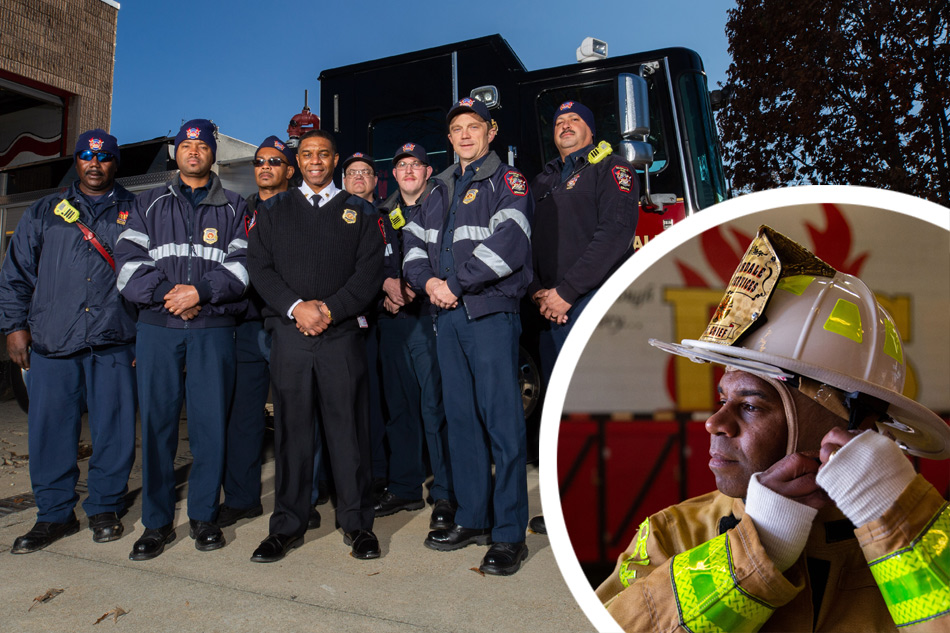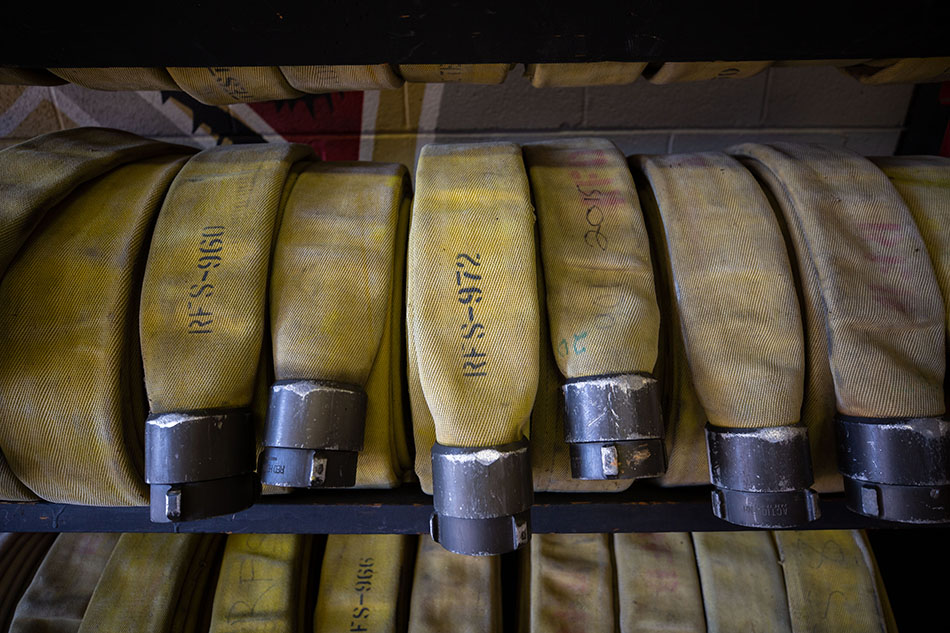More Stories
John Starr
Spring 2019 |
By Erin Fender
Some would say that for John Starr ‘16, his path toward a career at Chick-fil-A began at 14-years-old with a little faith.

Share the Story on FacebookShare the Story on TwitterShare the Story via EmailShare the Story on LinkedIn
Every 24 seconds, a U.S. fire department responds to a fire, according to the National Fire Protection Association. In 2017 alone, public fire departments responded to more than 1.3 million fires. It’s no wonder that firefighters have a high-stressed job.
To improve the physical condition of firefighters, fire departments across the country are making it a priority to develop health and wellness initiatives to ensure firefighters are at their healthiest both on- and off-duty.
“There’s a high mortality rate for firefighters,” says Sterling Jones, fire chief of the city of Riverdale fire department. “Typically, within 3 to 5 years after retirement, that’s when death hits.”

Be it bad eating habits or lack of exercise, Jones says firefighters can suffer from health issues that can affect a firefighter long after their career is over.
Early in 2018, Jones partnered with Clayton State University’s Health and Fitness Management (HFMG) department to develop a firefighter fitness initiative. Jones had experience developing wellness programs working with the cities of Atlanta and Augusta.
Through the Clayton County Chamber’s Leadership Clayton program, Jones reached out to Dr. Melanie Poudevigne, director of the university’s Health and Fitness Management program to create a fitness initiative for Riverdale’s firefighters.
The fitness initiative is based off the National Fire Protection Association standard on how fire departments should establish medical programs that will reduce risks and improve the health and safety of firefighters.
HFMG students tested a number of factors including muscle endurance, flexibility, oxygen consumption, agility, in addition to calculating a more accurate account for body fat percentage.
“It is important for the firefighters to have proper cardio endurance along with muscle endurance to perform their job. This way they are able to wear their equipment and gear and endure the fires longer,” says senior Christina Day.
Day said many of the firefighters she spoke to complained of poor nutrition and lack of sleep.
Be it bad eating habits or lack of exercise, Jones says firefighters can suffer from health issues that can affect a firefighter long after their career is over.
Through the Clayton County Chamber’s Leadership Clayton program, Jones reached out to Dr. Melanie Poudevigne, director of the university’s Health and Fitness Management program to create a fitness initiative for Riverdale’s firefighters.
The fitness initiative is based off the National Fire Protection Association standard on how fire departments should establish medical programs that will reduce risks and improve the health and safety of firefighters.
HFMG students tested a number of factors including muscle endurance, flexibility, oxygen consumption, agility, in addition to calculating a more accurate account for body fat percentage.
“It is important for the firefighters to have proper cardio endurance along with muscle endurance to perform their job. This way they are able to wear their equipment and gear and endure the fires longer,” says senior Christina Day.
Day said many of the firefighters she spoke to complained of poor nutrition and lack of sleep.

Jones said his firefighters work 24 hours and then take off for 48 hours. Workdays can vary, with the fire department answering 2-3 fires a night. Trying to eat can be a challenge, especially with someone dealing with diabetes, weight issues, or high blood pressure.
“You go 12 hours without eating or taking your insulin shot–you can’t take time out to go back to station to get insulin,” Jones says. “You may get a snack in but have to get back to work.”
Adding to the demands of the job, firefighters wear heavy fire equipment and carry large tools, which puts further stress on their bodies.
“With our jobs, it’s almost like an athlete. We wear about 75 pounds of weight on our back when we go into a working fire,” Jones says. “We’re doing a lot of things that take a lot of strength and endurance and effort to do it.”
More than 30 firefighters participated in the initiative, which started in September of 2018 and finished in December. Students conducted one-hour sessions with the firefighters weekly.
“We saw significant changes in the firefighters that stayed consistent outside of just coming to work with us,” says recent graduate Matthew Smith. “Diet is an important component in any fitness regimen, so the people that decided to change theirs saw better results.”
Data is still being compiled, but Jones is optimistic about what his firefighters will feel like after a full year of participation.
“What I’m really looking forward to is…they’ll start to do those workouts on their own,” Jones says. “I’m really proud of the program. I think it’s a one-of-a-kind thing that we’re doing.”
Back to the Spring 2019 issue
Spring 2019 |
By Erin Fender
Some would say that for John Starr ‘16, his path toward a career at Chick-fil-A began at 14-years-old with a little faith.
Spring 2019 |
By Kelly Petty
When the Impossible Burger debuted in July of 2016, scientists had set out to create the meatiest, juiciest burger completely made out of plant derivatives.
Spring 2019 |
By Jessica Merriman
Nkarra Thompson has big plans for her future. As one of the newest students to be accepted to Clayton State University’s nursing program.